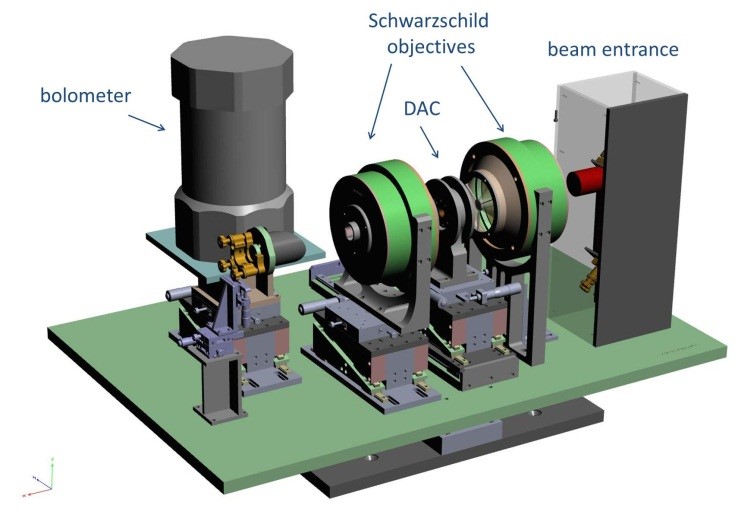Institute for Electronic Structure Dynamics
High Pressure Far-IR Spectroscopy
High-pressure phenomena, including metal-semiconductor transitions, phonons and high-pressure lattice dynamics, and phase transitions, can be studied by infrared spectroscopy employing a diamond anvil cell (DAC). Due to the high brilliance of the infrared synchrotron radiation from the IRIS beamline the gasket hole of the DAC can be optimally illuminated thus providing a very good signal-to-noise ratio. We are currently extending this approach in collaboration with the group Chemistry and Physics of Earth Materials of the GFZ Potsdam to the far infrared region by applying Schwarzschild objectives (developed at the SMIS beamline, SOLEIL synchrotron), with a large entrance pupil in con-focal arrangement. The large working distance allows the DAC to be used, e.g. in a cryostat. The current stage of the set-up permits transmittance measurements and is used to study new energy materials for solar cells such as chalcogenides and also to study phase changes in Earth’s crust abundant carbonate minerals.1
It is planned for the future to augment the IRIS beamline with a vacuum microscope which is currently under construction at the University of Augsburg by the group of Prof. Kuntscher. Beside measurements in transmittance mode the set up will also permit measurement of samples under extreme temperature and pressure conditions in reflection geometry.
References:
- Koch-Müller, M.; Jahn, S.; Birkholz, N.; Ritter, E.; Schade, U.: Phase transitions in the system CaCO3 at high P and T determined by in situ vibrational spectroscopy in diamond anvil cells and first-principles simulations. Physics and Chemistry of Minerals 43 (2016) 545-561 doi: 10.1007/s00269-016-0815-8

